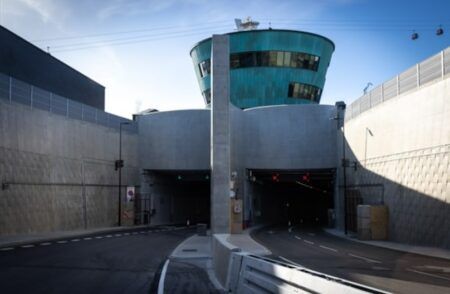The USA’s Volpe Transportation Research Center has released a Federal Highway Administration (FHWA) commissioned report that reveals how congestion pricing impacts commuting patterns, based on where drivers live and how much they earn. Volpe has conducted before-and-after household travel surveys in two cities that have pursued aggressive congestion reduction programs, Atlanta and Seattle, to capture a dynamic picture of how congestion pricing shapes household travel choices. Volpe recruited travelers for the study using license plate recognition technology during peak hours on the SR 520 (above) and I-90 bridges in Seattle and along a 16-mile (26km) corridor of Interstate 85 (I-85) and Buford Highway (SR 13) in Atlanta (below). Researchers recruited a pool of participants, representative of the population that uses these roads during the most congested hours. The final sample included more than 3,500 adults in Seattle and more than 3,000 adults in Atlanta. Participants completed surveys and a travel diary six months before and after congestion pricing was put in place.
In Seattle, the Washington State Legislature levied a congestion pricing toll on the SR 520 bridge between Bellevue and Seattle across Lake Washington to help pay for a replacement bridge. Tolls are higher during peak hours, and tolls are collected by transponder or by mail. The Volpe surveys showed that: recorded trip segments fell 43% on the SR 520 bridge, with reductions tending to fall into discretionary categories, such as shopping and dining; nearly 25% of regular SR 520 bridge travelers switched to Interstate 90 (I-90), a parallel, free roadway four miles (6.4km) south of the bridge to avoid the toll; 8% of SR 520 bridge travelers fell into the lowest-income group and were more likely to have switched to the toll-free I-90 route; respondents reduced their overall vehicle-miles traveled by 15%; and public transit users were generally neutral toward the congestion pricing plan.
In Atlanta, transportation planners turned an existing high-occupancy vehicle (HOV) lane along I-85 into a high occupancy toll lane (HOT or express lane) with congestion-based variable pricing, and increased the free-use occupancy requirement from 2+ to 3+. The surveys showed that: trips on the I-85 corridor fell 18%, though there was an increase in the number of trips reported in the express lanes; more than 80% of drivers using the express lane were solo travelers; driver satisfaction increased among express lane users, with more than 40% being satisfied with their trips, compared to about 25% prior to tolling; HOV lane users became less satisfied with their I-85 trips, as many of them shifted to the general purpose lanes; and there was a significant decrease in the belief that highway tolls are unfair to people with limited incomes, from 74% to 57%.
Both studies showed that: overall travel in the corridors declined, but the shares for transit and vanpools increased; drivers that chose to pay the toll experienced greater satisfaction with their trips; road pricing has a significant impact on route choice and affects the timing of trips; and that if agencies provide the public with clear explanation for the need for congestion pricing, the better their programs will be received.




